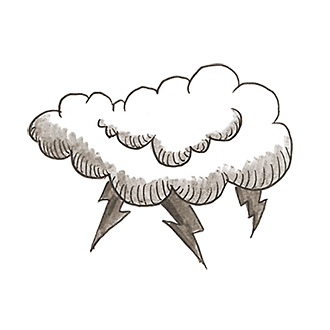
Related Questions
- What is “clean” coal?
- Which is more likely to happen first: solar panels on every home, or giant solar power plants?
- Is there a way to harness electricity from lightning?
- How many wind turbines would it take to power all of New York City?
- Is it possible to collect energy from foot traffic?
- How can solar cells become cost-effective enough to be commercially viable?
- Why do the products of a nuclear fission reaction in uranium have three neutrons but not three protons?
- What is a short circuit?
- Can we calculate the efficiency of a natural photosynthesis process?
- How do birds sit on high-voltage power lines without getting electrocuted?
What happens to electricity when nothing is plugged into an outlet?
Like water on a closed valve, electricity exerts a pushing force on the outlet, but instead of being called pressure, it is called volts.
By Deborah HalberElectricity has some similarities to water, so to help understand this question, you can consider what happens to water when the valve is closed, says Kurt Broderick, a research specialist at the Microsystems Technology Laboratories. The electricity, like water on a closed valve, exerts a pushing force on the outlet, but instead of being called pressure, it is called volts.
When certain devices, such as standard incandescent lamps or can openers, are unplugged or off, there will be no flow (amps) moving through the outlet. “The electrons don’t move, any more than the water does when the taps on the sink are closed, and thus there is no work done,” Broderick says.
But not all electrical devices are dormant just because they are not performing their primary function. A microwave with a clock, for instance, uses as much power as a clock when it is plugged in, and a phone charger with a transformer is using a minute amount of electricity.
Posted: June 16, 2009